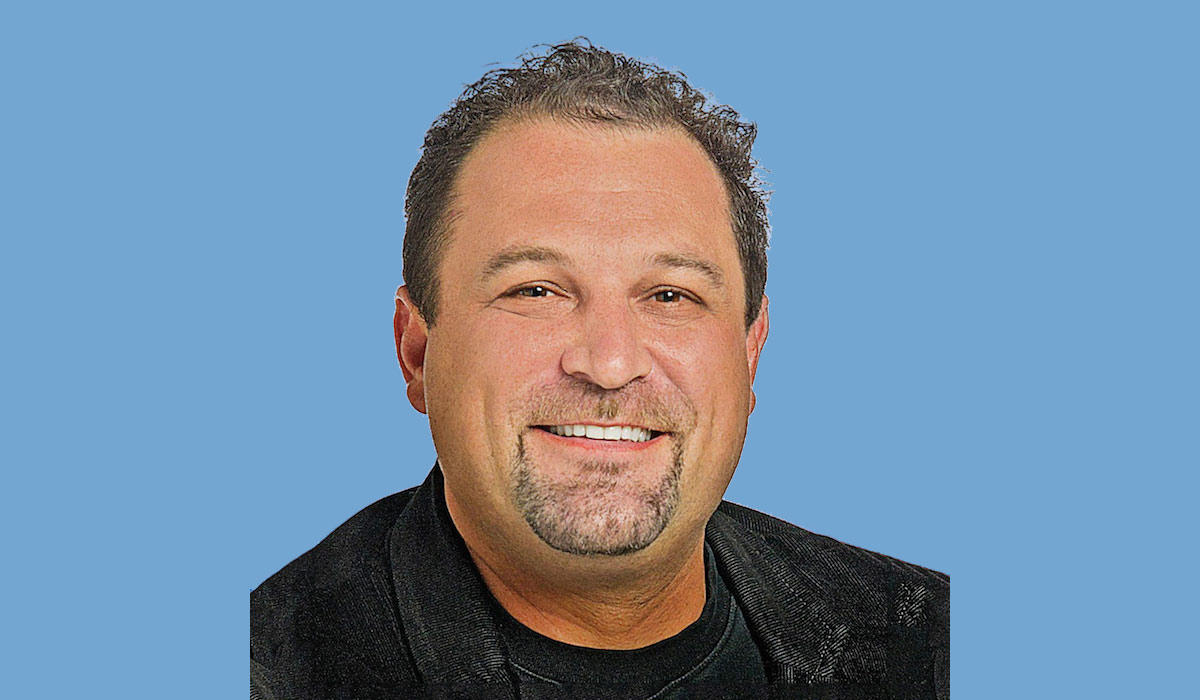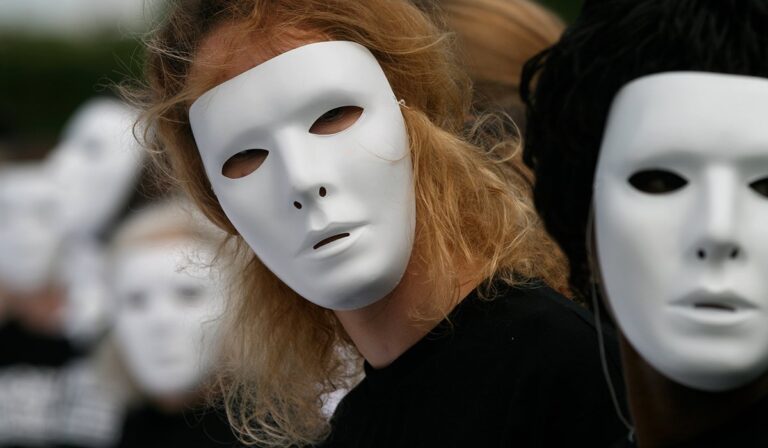Bryan Kramer Puts the Human Back into Social Engagement
I had the distinct pleasure of interviewing Bryan Kramer last week to discuss his take on B2B, B2C, and his favourite, H2H (human to human). Bryan is the CEO of Pure Matter, an award-winning global digital agency based in Silicon Valley. He’s a social strategist and author of the acclaimed book Human to Human: #H2H.
While this interview delivers on the H2H concept, there’s a nice little side discussion around outsourcing social engagement that just might help shed some light on handling social engagement for marketers and businesses of any size.

RANDY: Bryan, I first heard of you several months ago, when I started to see your H2H slides wandering through social media. And then when I had a chance to hear you speak at Social Shake-Up, I definitely wanted to hear more. So when I had the opportunity to reach out to you and make contact with you on Twitter and you responded, it was just fantastic.
I have a few questions for you today. Feel free, if you want, to go ahead and talk as much as you like. Hopefully, my questions are done in a way that will help you do that.

BRYAN: That sounds great, and thank you again for reaching out. I really appreciate it.

RANDY: Excellent. OK, let’s go. Question number one. Why do you think the idea of human to human strikes such a chord with so many marketers?

BRYAN: That’s a good question. I think that it probably strikes a chord now. It’s not something that is a new concept. A lot of people before me had talked about people to people, peer to peer, person to person.
I think that the concept of human to human, and the reason that I think the word human resonated now, is because humans tend to make mistakes, and there’s a stigma, I think, with the word human, in that they’re imperfect.
They are having imperfections in the way that they deliver things, and there are screw-ups and things happen. So I think that, especially with social media being the magnifying glass that focuses in on those screw-ups and identifying those even faster now, it’s a good time to embrace being human and say, “Yeah, we messed up. Yeah, we are human, and we’re going to acknowledge it.”
I think, again, this has always been that way; it’s just that it’s starting to become even more prevalent with the dawn of social media. I think that everyone just kind of needed something that allowed them to identify how to handle it, and that is being human.
Now, the term “human to human” has a little bit of a different take on it because you can also see some trends happening with automation and with automating both e-mail marketing, even social marketing, some automation there.
I think that when we’re looking at social media and how it’s best used and marketing in general, the best things happen when one person meets another and a relationship is born. That’s where most referrals come from, that’s where most sales happen, and so when you look at just the term “human to human,” it really is and always has been about engaging with people.
Brands don’t engage with each other, rarely. Businesses don’t engage with each other; it’s people that engage with each other. So I think that that’s also the second reason why it’s resonating so much, because it’s allowing people within organizations to reach out and communicate with customers directly.

RANDY: Excellent. It brings a sense of authenticity to the whole thing.

BRYAN: Totally.

RANDY: Excellent. Thank you very much for that. I have another question for you. What does H2H mean to you, in terms of day-to-day social interaction?

BRYAN: You know, it’s different to everyone, so I can’t speak on behalf of what it means to each person individually. But for me, it means that I’m replying to people.
Like you’ve said before, when you reached out to me on Twitter, I think about nine times out of ten, unless I’m really slammed or I’m in a meeting or something like that or traveling, but any other time I can, I try to reply to everybody I can.
I try to reach out to people as well; I don’t just wait for people to come to me. So I think it’s symbiotic in the way that we address how we build relationships, and social media really is a social helping, social relationship-driven medium. So I try to walk the walk, not just talk about it.
For me, it’s all about engaging with people and getting to know them and taking that relationship, hopefully, further at conferences, like where we met, or maybe the next conference we’ll actually get a chance to sit down and talk. The evolution of that relationship from tweet to now phone calls to meeting in person and conferences, that’s what I think being human is. It’s really building those relationships one-to-one.

RANDY: Excellent. I totally agree. I’m actually in quite a dialogue right now on Google+ around outsourcing social media, my view being that we should be doing as much as we can ourselves and outsourcing as little as we can. I’m kind of curious about your own view on that.

BRYAN: I think that it’s fine to outsource to a certain extent. I think that there’s pieces that you can delegate, that helps you to build content.
Content right now is really the field that helps people to start a conversation or engage around something that everyone’s interested in. So I believe content is something that can be co-created with other people. I also believe that the social push of that content can also be pushed out by just about anyone.
What I don’t think that you can outsource is a response or a reply. I think that that has to come from somebody who owns that handle, who represents that handle, who is in charge of the idea or the content behind that handle. So, for me, there’s a clear separation between what you can and cannot outsource.

RANDY: I tend to agree with you, well, not tend to, completely agree with you, actually. I’ll have to send you a link to that discussion [ Original 33 coments | Shared 27 comments ]. Maybe you can jump in on it with us over there.

BRYAN: Yeah, I’d be happy to.

RANDY: OK. Thanks. I appreciate that a lot. It’s very timely for some of the things that are going on on Google+ with myself and quite a number of my connections or colleagues. It’s a fairly hot topic.
Next one here. What are some common mistakes you see that go against the principles of H2H interaction?

BRYAN: Common mistakes that go against the H2H principle?

RANDY: Yeah. Go ahead.

BRYAN: You know, I think the biggest common mistake is not owning up to the challenge.
There’s a prime example of Samsung putting out a video for the ALS challenge. They dumped animated ice over the Samsung Android phone, and it was making fun of Siri and Apple. They didn’t donate any money to ALS and they didn’t have anything that pointed to the fact that this was for a cause.
They merely used the concept of this ALS challenge and used it for their benefit to take down their competitor. It was just so wrong and in poor taste and so on and so forth. Now, that’s OK. Like I said before, we make mistakes, right? All we need to do nowadays is, really, authentically acknowledge them.
Unfortunately, the response that came out of that and the YouTube views were off the charts, so obviously it did not resonate with a lot of people. But the response that came out of it was just explaining it, but there was no acknowledgement. They didn’t say, “Sorry, we see what you’re saying.” It was, “Well, here’s why we did this. We were going after Apple. We saw it as funny, as humorous,” and so on and so forth. They didn’t acknowledge it, really, whatsoever.
That, to me, was their shining moment that really kind of took it down even farther into a dark hole. Then the conversation lifted even higher out of that statement, and they almost grounded themselves.
Then you’ve got the adverse to that, where US Airways had that bad tweet, where they accidentally pushed a tweet out of an image of a lady doing inappropriate things with an airplane. They looked into it, and they figured out that that picture was just a copy paste that was supposed to be flagged as inappropriate, but it was copied into the next tweet, which had nothing to do with this picture. It was an obvious mistake.
Instead of firing this person, they responded within a timely manner, which is key, 24 hours later, and said, “We realize this was a mistake. Here’s exactly what happened. We are so sorry. We’re not firing this person because it was a mistake, but we are now going to be training our social media engagers in the following ways, and we feel like these are now the best people to keep because they know what not to do.”
So I think it was just an awesome response, and the antithesis of what I just explained on the Samsung concept. It’s kind of timeliness in response and how you respond, to answer your question. I think if you can really turn that authentic response volume up when it’s needed, you’re going to be great. When you don’t, you’re going to see the repercussions.

RANDY: Yeah, absolutely. Excellent examples. Thank you very much. Further on that, you talked about the airline, doing well. Are there others that you can think of that you think are really doing H2H well?

BRYAN: Yeah, a lot of people ask me for, ironically, B2B – My book says no B2B or B2C, it’s H2H – but I’m talking about how we speak and how we act. I’m not talking about the process of business.
So when we talk about the process of business, then yes. B2B companies are probably harder to deal with this kind of thing because they haven’t ever thought of themselves before as an engagement practice between the customer and the employees at these big companies.
I would actually say it’s kind of fun, but if you tweet IBM, you’re going to get a response. Their social team and their internal workings, they’ve been working so hard at building a great engagement model, and also delivering surprise value and unplanned engagement that you would never expect.
For instance, on Valentine’s Day, I got this personal valentine card or image or meme that was personalized to me from IBM. So they took the time to make this meme and reach out to me, and just simply say, “Happy Valentine’s Day. We appreciate and love you. IBM.” I was like, who does that? Who takes the time to do something like that? Even if they did it for other people, that means they had to customize something that many times. I think that they’re certainly high on my list because of the way that they have built their H2H engagement model.
And then on the consumer side, I would say Virgin is probably one of my favorites. I tweet a lot. My wife sometimes gets upset because I tweet from every store, every place I travel to, every brand that I’m in, to see who is being H2H in their response. Are they looking past just me on the surface, and actually identifying who I am and having a really real conversation?
Like with Virgin, I tweeted and said, “I’m high up in the air. I’m flying. I have my electricity, my coffee, and my internet. What could be better? Thanks, Virgin.” I think I also said I was on my way to speak at a conference in Florida. They replied back, and they had looked at the conference and I popped up, and they must have seen where I was heading, because they tweeted me back and said, “Have a great time at the IBM conference.” And so they obviously looked beyond what I was saying, and they customized a response back to me.
It wasn’t creepy because I had actually given them the information that made it OK to look it up. Like my friend, Ted Rubin, says, it’s looking people in the eye digitally. It’s looking beyond what they’re actually just saying and actually actively listening, and then paring it down and saying, “OK, well, have a great time in Florida at the IBM conference.”
They really personalized that response to me. By the time I actually landed, their tweet had been retweeted over 200 times because it impressed so many people, and there were two bloggers who actually blogged about this interaction.
I guesstimate that they had, at the very least, 5 million impressions just on personalizing their response to me and looking me in the eye digitally. I think that most companies could do something like that. It’s very simple to do, and yet they just don’t take enough time to actually do it.

RANDY: Yeah, that’s wonderful. I love hearing stories like that. OK, Bryan, we’ve gone for about a half an hour here. I have one more question for you, taken off right from your book. That is, would you tell us the secrets to making ideas crowd-worthy?

BRYAN: Yeah. This is something, as you know, I talked about this also at Social Shake-Up, and it’s something that can be applied to just about everything that we do. I’ll give you just a few of them, and then maybe we can put a link up online to the video, just so that you can actually get some context around what I’m saying because you have to get the full case studies to understand this.
But the biggest thing that I would say is to imagine if you’re in the middle of a stadium, especially right now with the World Series going on, this is such a great example because there’s so much energy and there’s so much excitement going on. People can sit in an audience and they can participate in and/or start a wave
Starting a wave is a lot harder than participating in a wave. When you’re starting a wave, there’s always this science behind it that you can identify, and that’s that one person always really starts the wave. One person starts it within their smaller group, and that smaller group starts the section going, and the section starts that side of the stadium, and then before you know it, it takes off.
We actually did this, I think, when you were there in the audience at Social Shake-Up. So you could see how that happens. Now taking the power of one, the power of a brand or a person to start something, there has to be kind of a mix of things that are going on. For instance, at the World Series, it’s exciting. They might be playing at home. The weather’s good. All of these things have to play into the fact that people really want to participate in the wave, otherwise it’s only going to go around once. But when you have something really exciting going on, it could go around several times. And when it’s a really big game and a really exciting time and the crowd is really into it, then it might go around 7-10 times.
That same thing happened with the ALS challenge, where Pete Frates, who was a baseball player in Boston, was the first guy to do the video to set the whole ALS challenge off. Now when you look at the statistics or the data, you can see all of that sharing stemming from Boston. So we know the power of one works.
You can also see it in SF Batkid, like when the San Francisco Batkid toured the day on his Make-A-Wish Foundation wish to be Batkid for the day, the reason that it resonated so loudly is because one person heard about it and blogged about it, and that blog got so much readership and impressions that they ended up getting 17,000 volunteers two weeks before that day ever happened.
Again, I’m just sharing one of the secrets here. The power of one always comes down to one person or one brand that can really start something to go viral or make it go crowd-worthy. I’ll leave it at that, and maybe we can post a link to the video.

RANDY: Absolutely. I’ll definitely post the link. I appreciate that, and I also appreciate your time today. There was one more question that popped up. I promised I only had one more, but I actually had two. The final one here is when we’re talking about social engagement from the company’s side and often the contractor’s side, do you think there’s any difference between the CEO, the sales staff, marketing, on who should be engaging and who shouldn’t be engaging?

BRYAN: Within a company, is that your question? Within the company, who should engage and who shouldn’t?

RANDY: That’s correct.

BRYAN: There’s not one answer, unfortunately, that I can give you because every company is so different.
What I think every company does need to do is they need to offer or instill two or three different things.
1. They need to train everyone, no matter what, whether they’re going to engage or not. They need to understand how to communicate on behalf of the company.
It’s a must now because everyone has access to the customer, simply by opening up a browser. You can open a browser and have access to a customer, so everyone should learn how to communicate and what it means to the company and for you to have your brands aligned, and how do you engage, even if it ever came to that.
2. The other thing is that you need to have an HR policy, and that HR policy really should explain very clearly in non-legal language exactly the expectation that everyone at the company is under.
A lot of companies are still kind of gray in that area. They don’t really know what they’re expecting of just the company in general. I like IBM’s. It’s basically if you wouldn’t do it offline, then don’t do it online, and that’s it. That’s the whole thing. It’s such a great example there.
3. And the third thing is a governance plan.
I know this isn’t going to exactly answer your question because it’s not that black and white, but you need to come up with a governance plan that maps out who should and who shouldn’t, or who should and maybe this group is more apt to LinkedIn and this group is more apt to Twitter.
There’re all kinds of variables for the different social networks, and that’s why there’s not just one answer. That governance plan should really start to map out who, what, where, when, and how people within brands share.

RANDY: Gotcha. So large organizations are going to be more aware of that than the smaller ones?

BRYAN: Absolutely.
It’s a lot easier for a small company to be, as you know, more nimble, more flexible. Everyone is sharing at a five-person company or a 10-person company, and that’s awesome.
That’s what makes, I think, the big companies scared, because they can act and move faster than any big company can, and it’s given them a leg up. There’s no reason small businesses right now shouldn’t surpass the engagement levels that big companies can do.
The biggest downfall is that larger enterprises are becoming content machines. They can afford to hire agencies and content people to build content for them, but what I’m talking about is on the engagement side.
On the engagement side, they [small business] can really look, act, and appear like a big company because of the simple reason that comes to being flexible and faster.

RANDY: Wonderful. Thanks very much, Bryan. First of all, thank you very much for talking to me today and being approachable through Twitter. It was fantastic to get your response, and it was great to talk to Tracy through e-mail, setting this up. I’m just going to close out. Maybe if you have any last thoughts, feel free to jump in.
While you think about that, I’ll give people an idea of who you are, just in case they don’t know, which probably is unlikely. For anybody that might be listening to this later, Bryan is the CEO of Pure Matter, an award-winning global digital agency based in Silicon Valley. He’s a social strategist and recent author of the acclaimed book Human to Human: #H2H.
So, Bryan, are there any parting thoughts you have before we sign off?

BRYAN: You know, I think the simple thing is just make sure that you’re always listening. 86% of brands online are still not listening, and that’s a huge opportunity right there, just to be able to, like I said, open up a browser and start listening to what people are saying about your product or service, or what your competitors are saying, or what your potential clients or customers are saying.
If you do anything, listen. It’s one of those basic skills as a human that we all need to pay attention to that can enhance all of our marketing.

RANDY: Absolutely. Alright. Thank you very much, Bryan, I appreciate you taking the time to talk today.

BRYAN: Thank you. I appreciate it.
Key comments from related discussions in GPlus:
- Bryan: You can automate and outsource content being pushed out, it’s much harder to outsource relationships. #H2H
- Randy: At Kayak, we simply refuse to take over social engagement for our clients. We emphasize that it’s extraordinarily important, because it is, but we never want to do it for them.
- Iblis Bane: We’ll help them plan a strategy, we’ll train them, but I’ll do anything to avoid having to post and engage as them.
- Ben Fisher: We find that some companies do not have the time, but we encourage them to make the time in certain situations where they need to be.
- Natascha Thomson: Randy, I generally agree with the sentiment. Especially on LinkedIn, you can’t outsource your relationship when you communicate as a business professional. We did a pilot on this at SAP and I ended up feeling like an impostor, posting information a product manage fed me in a group. Never again.
- Pam Adger: I get paid to post for a page here on G+. We follow guidelines, have monthly meetings and leave moderation to a company representative. We are encouraged to comment under our real names even though we post under the company page.
- Joan Laine: Outsourcing is perfect in the interim, as the company works with the consultants to understand about safe social media and blogging.
- Jason T. Wiser: Social Media is just another avenue of marketing and if properly coordinated and defined, it can, and in many cases should be a delegated task.
- Kara Wood: I think each company and person is unique in their ability to either a. have the time, b. understand the changing landscape of social media c. have the ability to tell their story.
- Padraig Ó Raghaill: Please do not read this article from Randy Milanovic he is displaying thought that is not compatible with the general thinking of people. We should not encourage free thought. [:-)]
- Michael Shane David: Work with suppliers and get training but companies, brands and the person have to work at real business relations.
{{cta(‘7bddf774-979c-4867-82da-5615f1966395’)}} {{cta(‘ab2f54c9-130d-474d-b1fd-2f642e788b86’)}}






